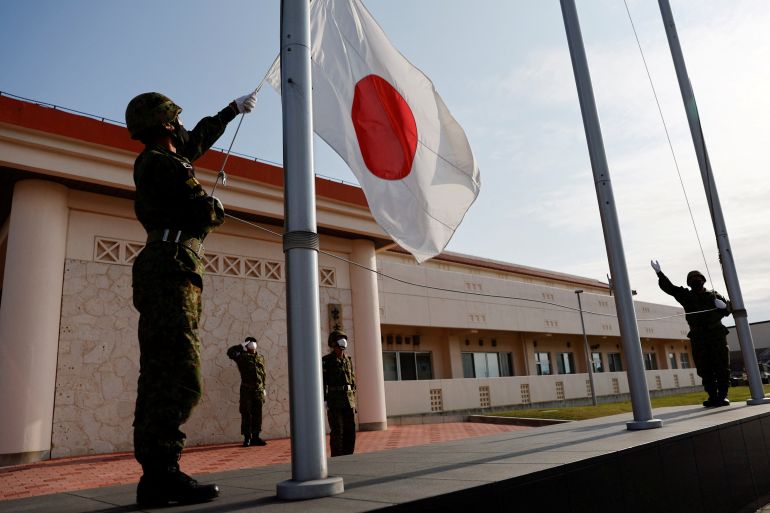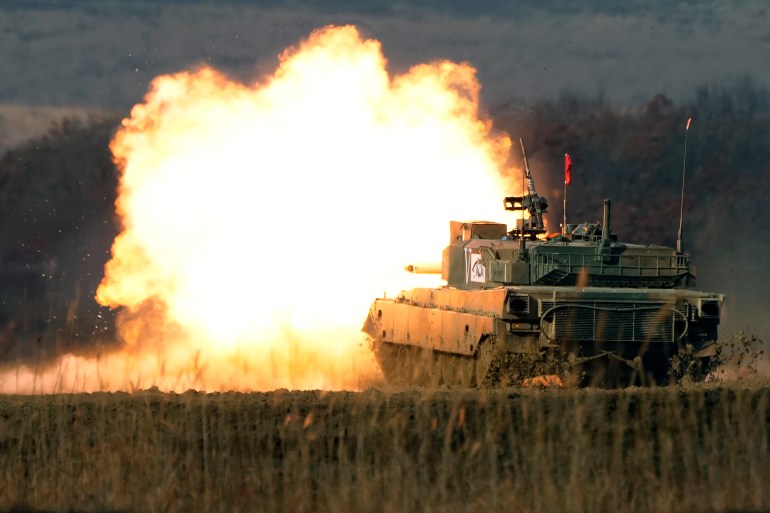Japan plans longer-range missiles to counter China, Russia
Japan has become increasingly alarmed about China and Russia’s ambitions amid a number of territorial disputes.

Japan says it will develop and mass-produce a cruise missile and a high-velocity ballistic missile, as part of a military expansion aimed at dealing with threats from China and Russia.
The procurement plan unveiled in the defence ministry’s annual budget request on Wednesday was short on detail but represents a clear departure from a decades-long range limit imposed on Japan’s constitutionally-constrained Self-Defense Force.
Keep reading
list of 4 itemsJapan to push for Africa seat on the UN Security Council
Japan pledges $30bn in aid for Africa at Tunisia conference
Japan to spend $1.83m on ex-PM Abe’s state funeral
“China continues to threaten to use force to unilaterally change the status quo and is deepening its alliance with Russia,” the ministry said in its budget request.
“It is also applying pressure around Taiwan with supposed military exercises and has not renounced the use of military force as a way to unite Taiwan with the rest of China,” it said.
Alarm about China’s regional ambitions has intensified after it held large-scale military exercises that included firing ballistic missiles after US House of Representatives Speaker Nancy Pelosi visited Taiwan earlier this month. Five of the missiles landed in waters less than 160km (100 miles) from Japan.
Tokyo also has long-running territorial disputes with Beijing and Moscow – over the Senkaku Islands, known as Diaoyu in China, and the Northern Territories, known as the Kuril islands in Russia.
The defence ministry also mentioned the risk to Japan posed by North Korea, which has carried out an unprecedented number of weapons tests this year.
The ministry said it will only be able to release details of the spending after December when the government is due to adopt a new national security strategy, which is being revised to reinforce Japan’s military capability over the next five years.

Japan has already been strengthening its security alliance with the United States, a key ally, and expanding military cooperation with friendly nations in the Asia-Pacific region and Europe.
Critics worry the missile upgrades – and the potential use of preemptive attacks – would fundamentally change Japan’s defence policy and potentially breach the post-war pacifist Constitution that limits the use of force to self-defence.
Only a partial sum of 5.6 trillion yen ($40.4bn) was disclosed for 2023, but the ministry’s budget plan could rise to about 6.5 trillion yen ($47bn), up 20 percent from this year, Japanese media said.
Japan caps annual defence spending at 1 percent of its GDP, but Kishida’s governing party proposes doubling that in coming years, citing NATO’s standard of 2 percent of GDP. That would make Japan the world’s third-biggest military spender after the US and China.
The ministry requested an undisclosed amount to improve and mass-produce an upgraded Type 12 surface-to-ship guided missile to extend its range for use as “stand-off” attacks on enemy targets from destroyers and fighter jets.
It has already ordered air-launched missiles, including the Norwegian-made Joint Strike Missile (JSM) and the US-manufactured Joint Air-to-Surface Stand-Off Missile (JASSM) with a range of up to 1,000km (620 miles).
The ministry also requested an undisclosed amount for development and mass production of a “high-speed gliding vehicle” to defend remote islands, including Okinawa and outer islands near Taiwan.